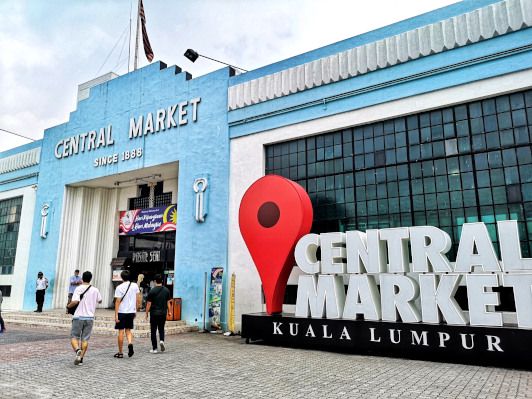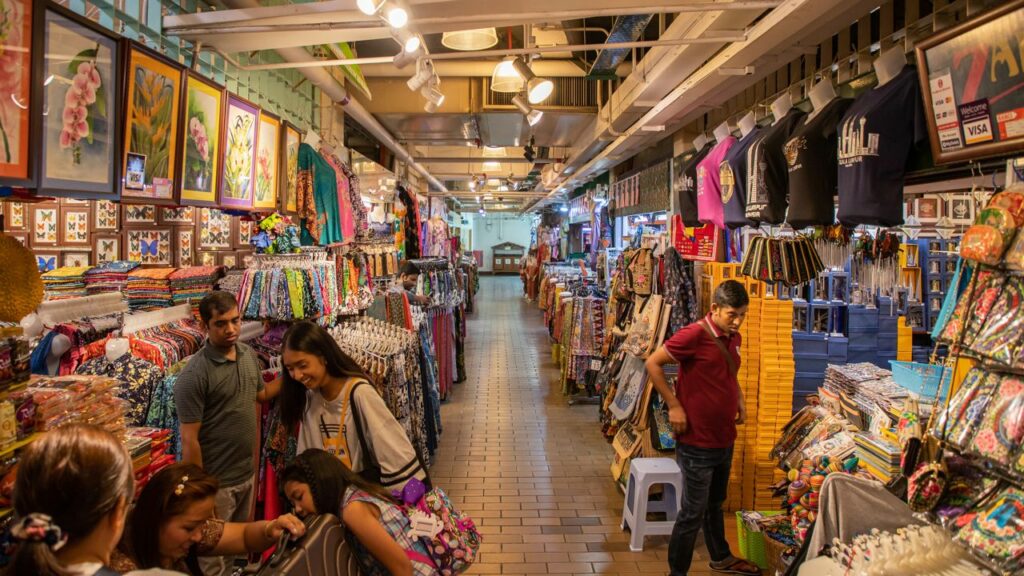
By Ravindran Raman Kutty
In 1880, the Kuala Lumpur wet market, nestled in the heart of the city, boasted a vibrant tapestry combined with a bustling mosaic of sights, sounds and smells. Every corner of this lively marketplace brimmed with life and the culture of its diverse community.
Among the visitors to the market in the 1960s were my father and I, rather young at that time, both eager to experience the sensory overload that awaited us.
We would board the Kuala Lumpur-Klang-Port Swettenham bus number 55, heading towards Kuala Lumpur from Bukit Jalil Estate in Puchong. As the sun cast its midday light over the city, our journey was filled with excitement, especially during the festive seasons of Deepavali and Onam (Malayalee harvest festival). These occasions brought an extra layer of vibrancy to the market, with decorations and celebratory goods adorning every stall.
Arriving at the market, Acha (dad) and I would step off the bus from the KL-Klang bus station, and make our way to the market entrance.
Our path was a mosaic of the hectic morning commerce: soggy worn-out tiles littered with fallen green leaves and broken carrots beneath our feet. The wet ground meant we had to tread carefully, the sogginess threatening to creep up our legs.
Acha and I, both in our shorts, carefully navigated the puddles and took cautious steps, both of us acutely aware of the risk of soiling our slippers.
At the entrance, we would be greeted by a huge garden of greens; small and big retailers forming a row of what seems like a never-ending river of cauliflowers, carrots, brinjals, spinach, cabbages, and any other vegetable you could think of.
As we ventured deeper into the market, the cacophony of sounds grew louder. The pungent aroma of the fresh catch of the day hit us almost immediately – the fish
section. “Kembong, lapan puluh sen!”, “Tenggiri, seringgit dua puluh sen!” The fishmongers were a chorus of energetic voices, calling out their prices with a fervour that competed with the noise of the market. The din was a lively, chaotic, deafening, beautiful melody.
After selecting a few fresh fish, we moved on to the chicken section – a different yet compelling scene. The fowls were housed in plastic cages, each with a different variety.
Cockerels, with their vibrant feathers and commanding presence, were kept in separate cages from the hens. The hens were categorised by their plumage: white-feathered birds and brown-feathered ones kept to their own designated spaces.
My Acha, experienced and familiar with the routine, chose the best chicken and fish with practised ease, all the while sharing little bits of knowledge with me about the market and its history.
In the meantime, I marvelled at the diversity of the market, taking in the colours, sounds, and smells that defined this corner of Kuala Lumpur.
The visit to the market was not just a shopping trip; it was a rite of passage and a celebration of the rich, multicultural tapestry that made Kuala Lumpur unique.
My father and I, amidst the chaos and vibrancy of the wet market, were part of a living tradition, one that connected us to our past and celebrated the present.
However, today, as I walked through the Central Market alone without my Acha holding my hands, the transformation from its vibrant, bustling past was striking. Once a hub of fresh produce, lively trade, and unforgettable stench, the market now stands as a showcase of cultural diversity and modernity.
Gone are the familiar sights of vegetable stalls, fishmongers, and poultry vendors. The once dirty walkways and soggy paths have given way to clean, polished floors, reflecting the light and enhancing the market’s inviting atmosphere.
The Central Market has evolved into a vibrant space filled with a rich array of ornaments, clothes, souvenirs, batiks, and collectibles.
Each shop is a treasure trove of unique items, carefully curated to cater to the tastes and interests of tourists from around the world.

As I made my way through the aisles, I was struck by the sheer variety of people around me. It felt like walking into an international airport, with visitors and vendors of different colours, origins, and shapes mingling in harmony.
The market has become a melting pot of cultures, each contributing to the vibrant tapestry that now defines it. The building now exudes a sense of order and cleanliness that contrasts sharply with the bustling, sometimes chaotic atmosphere of its past.
The ambiance is one of calm and appreciation, a far cry from the noisy fish section and the soggy vegetable paths. The market is no longer just a place for buying and selling; it is a destination for exploration and discovery.
As I looked around, I couldn’t help but feel a sense of wonder and pride. The Central Market has evolved beautifully, offering a space where people can experience the rich cultural heritage of Kuala Lumpur while enjoying a modern, clean, and welcoming environment.
The market’s transformation is a testament to its ability to adapt and thrive, blending tradition with contemporary charm.
I was delighted that I managed to try my favourite Chinatown cendol, and particularly excited to find some dodol, a sweet treat that my daughter wanted to take to Sydney.
The thought of her sharing this piece of Malaysian culture with her friends across the world made me smile. The market’s current form, with its emphasis on preserving and showcasing cultural richness in a modern setting, is a wonderful evolution of its storied past.
I left the Central Market, feeling both impressed and overwhelmed, not just by the beauty of the space but by the sense of connection it fosters among people from all walks of life.
Ravindran Raman Kutty — a communications consultant, poet and social observer who regularly pens his thoughts for those who appreciate his colourful recollections and observations